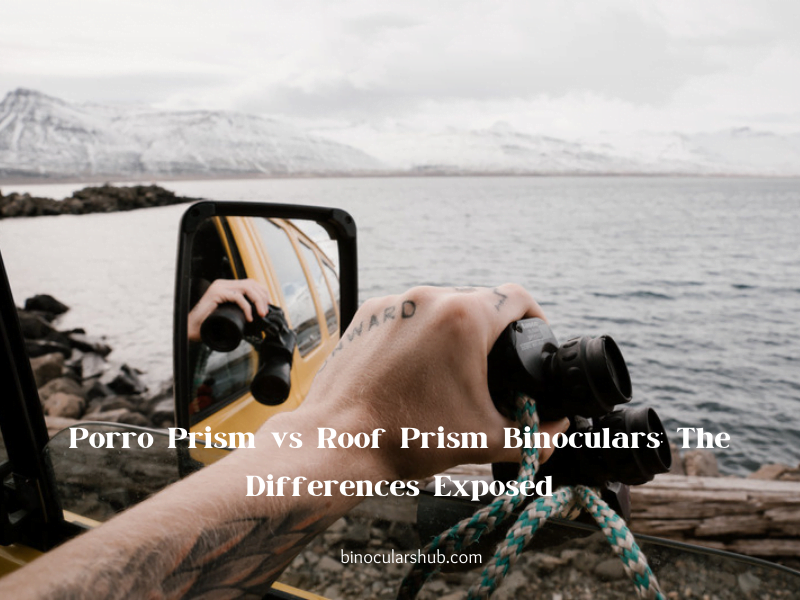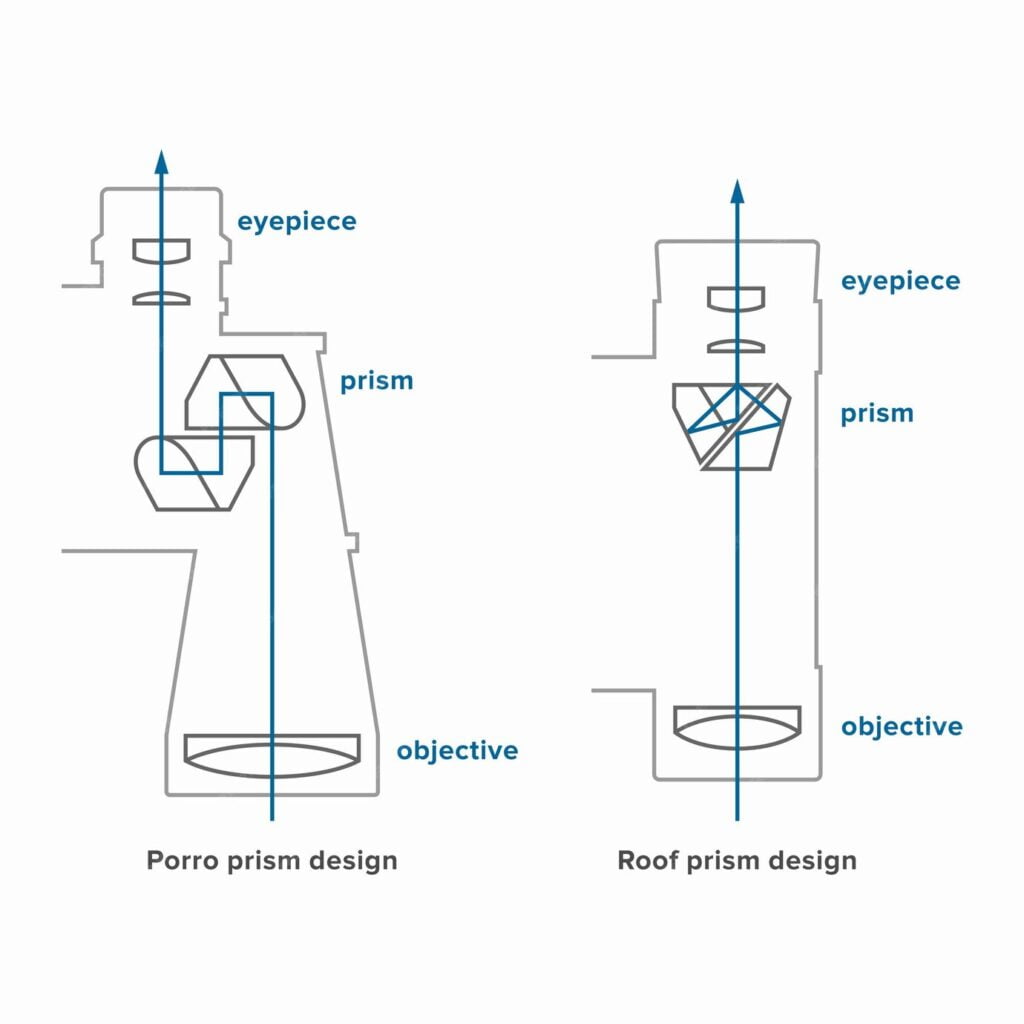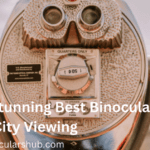Welcome to our guide on the differences between porro prism vs roof prism binoculars. We’ll explore the distinct features and applications of each prism system, covering aspects like light path, optical performance, and prism design. This guide aims to help you make an informed choice based on your preferences and needs. Let’s compare the essential features of roof and porro prism binoculars.
What Are Roof Prism Binoculars?
Roof prism binoculars are used for a streamlined and compact viewing experience. The reflective surface and optical prism, resembling the roof edge of a building, cleverly meet at a 90° angle. The light enters and passes through the prism, correcting the inverted image when observed through the eyepiece. Paired with a second prism, the roof prism design has a straight-line optical path, creating a sleek and trim exterior, while the reflective surfaces and intricate angles necessitate special coatings like Phase Coating and Dielectric Coating for optimal image quality.
Roof prism designs, with their narrow hinge and sophisticated design, cater to serious outdoor enthusiasts. The direct optical path provides the advantage high-powered viewing, and the prism system’s inherent durability and waterproofing enhance its appeal. However, the cost factor can be a disadvantage for those on a budget, and the risk of losing slightly more light from dispersion due to sharp angles in the optical path should not be overlooked.
What Are Porro Prism Binoculars?
Invented by Ignazio Porro, the porro prism binocular presents a classic design with a distinctive “broad-shouldered” shape. The reflective optical prism, in the form and shape of a right-angle triangle, creates a natural and bright image presentation. Used in pairs, porro prisms elongate the effective focal length of light rays along the optical path, maintaining a 90° turn at each reflection, ensuring a true-to-color upright image without risking light loss.
Porro prism binoculars offer a classic design and budget-friendly options, which are advantages. The right-angle triangle prism configuration provides even optics at distance and a natural bright image. However, their larger size and weight and potential performance variance based on price are disadvantages to consider. Additionally, the lack of waterproofing sets them apart from other lenses and their roof prism counterparts.
Difference Between Roof and Porro Prism Binoculars?
The difference between roof and porro prism binoculars extends beyond their physical surface appearance. Roof prism binoculars boast a narrow hinge and a straight-line optical path, creating a trim and sleek exterior. In contrast, porro prism binoculars feature a wider hinge, leading to their recognizable “broad-shouldered” shape. Traditionally, a roof prism binocular is associated with higher costs, but advancements in manufacturing have narrowed the optical performance distinctions between the two types.
Which is Better: Roof or Porro Prism Binoculars?
The comparison between roof and porro prism binoculars is nuanced, with each prism type having its strengths and weaknesses. Roof prism models, while offering a compact design, durability, and advanced features, come at a higher cost. Porro prism binoculars, often more budget-friendly, retain a classic design and appeal to users with specific preferences. The choice hinges on individual needs, budget considerations, and the desired level of performance.
How to Choose Between Porro and Roof Prism Binoculars?
Choosing between porro prism and roof prism binoculars necessitates a thoughtful evaluation of your needs and preferences. For budget-conscious users engaged in casual observations, the lower cost of porro prism binoculars may suffice. Conversely, for serious outdoor activities, travel, or those seeking advanced features and durability, roof prism high end binoculars are a worthwhile investment. The decision-making process when purchasing new binoculars should weigh factors such as budget, intended use, and desired performance, ensuring an informed choice for an enriching optical experience.
Why do Binoculars use Prisms Instead of Mirrors?
Prisms bounce light around inside them without losing much of its brightness, a process called total internal reflection. On the flip side, mirrors absorb some light, making it less bright. In binoculars, prism systems are used instead of mirrors because they’re better at keeping the light intensity high.
What is the Ideal Magnification for Birdwatching with Roof Prism Binoculars?
For birding, an ideal magnification range is typically between 8x and 10x. Lower magnification (8x) provides a full image and wider field of view, making it easier to locate and track birds, while higher magnification (10x) brings distant birds closer for more detailed observations.
Are Roof Prism Binoculars Good for Astronomy?
While roof prism binoculars are versatile and can be used for various purposes, they may not be the best choice for stargazing. Binoculars designed specifically for astronomy tend to have lower magnification, wider fields of view, and larger objective lenses to capture more light in low-light conditions.




